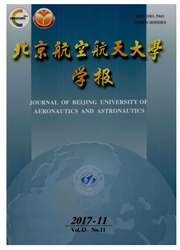

 中文摘要:
中文摘要:
单元制造是在当今小批量、多品种的生产环境下的提高生产柔性和效率的一种有效手段。在单元制造的基础上,提出了一种融合物理制造单元和逻辑制造单元的柔性单元构建方法,并建立了相应的混合整数规划模型。通过在物理制造单元与逻辑制造单元设计思想之间寻求折衷来提高系统的柔性并减少制造成本。在模型设计中,考虑了制造资源布局、加工路径选择以及加工批量设置问题。以最小化加工成本、加工车间之间和之内的运输成本、跨单元操作成本和机器移动成本为目标,通过将制造资源重新布局在给定的加工地点(加工车间),形成若干敏捷柔性制造单元。数值实验结果表明了的这一设计思路的有效性。
 英文摘要:
英文摘要:
Cell manufacturing (CM) is an approach that can be used to enhance both flexibility and efficiency in today' s small lot and multi-type production environment. Based on CM, in order to enhance the fle~dbility of the manufacturing system and reduce manufacturing cost, a mixed integer programming model integrating the thought of physical manufacturing cell (PMC) and logical manufacturing cell (LMC) is proposed. Aimed at minimizing the total manufacturing cost including processing cost, the inter- and intra-jobshop material handling cost, the inter-cell operating cost and the machine relocation cost, the design of flexible manufacturing cell (FMC) model mainly considers three factors : machine layout, routing and production lot sizing. Several agile flexible manufacturing eells are formed by reconfiguring machines to jobshops and manufacturing cells. The correctness and validity of the proposed approach are proved by computational results.
 同期刊论文项目
同期刊论文项目
 同项目期刊论文
同项目期刊论文
 Equity and efficiency analysis of pricing strategies in a bi-modal network with heterogeneous user g
Equity and efficiency analysis of pricing strategies in a bi-modal network with heterogeneous user g Modeling the evolutions of day-to-day route choice and year-to-year ATIS adoption with stochastic us
Modeling the evolutions of day-to-day route choice and year-to-year ATIS adoption with stochastic us Modeling time-dependent travel choice problems in road networks with multiple user classes and multi
Modeling time-dependent travel choice problems in road networks with multiple user classes and multi One-step solution fabrication of magnetic chains consisting of jingle-bell-shaped cobalt mesospheres
One-step solution fabrication of magnetic chains consisting of jingle-bell-shaped cobalt mesospheres Support vector machine forecasting method improved by chaotic particle swarm optimization and its ap
Support vector machine forecasting method improved by chaotic particle swarm optimization and its ap Static floor field and exit choice for pedestrian evacuation in rooms with internal obstacles and mu
Static floor field and exit choice for pedestrian evacuation in rooms with internal obstacles and mu A model for evaluation of transport policies in multimodal n etworks with r oad and p arking capacit
A model for evaluation of transport policies in multimodal n etworks with r oad and p arking capacit 期刊信息
期刊信息
